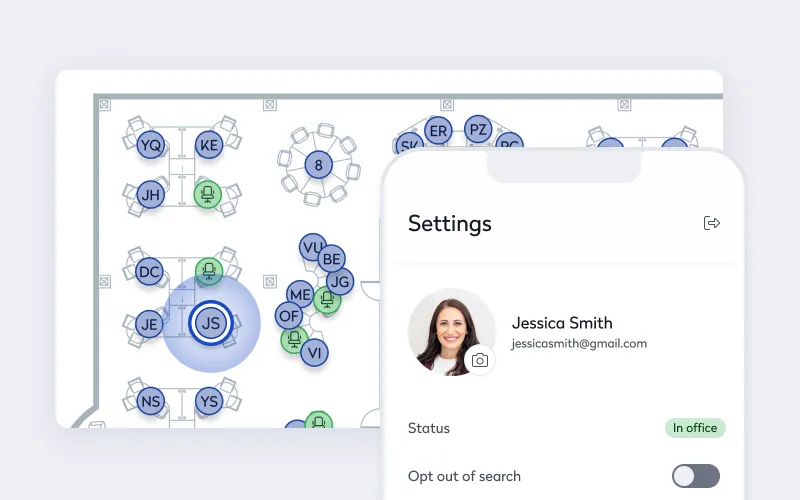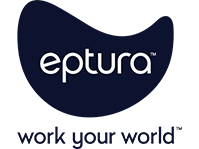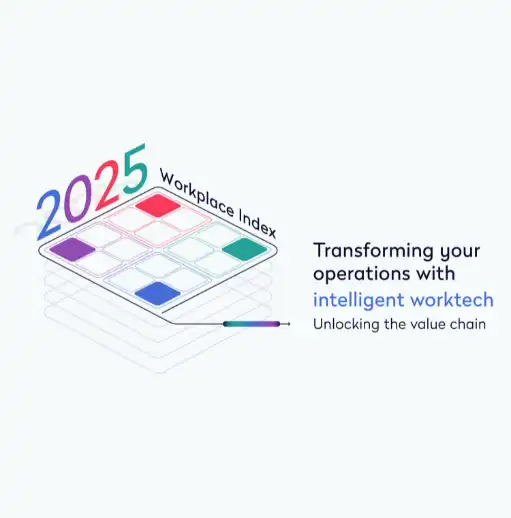
Operational leaders across industries clearly see value in implementing new technologies. 67% of companies in the financial and professional services sectors have hired a digital workplace leader, while 68% of building and facility managers plan to use automation to manage visitors in the next year, according to Eptura’s 2025 Workplace Index report.
Capturing all that potential value, though, starts with understanding how a software solution plays a supporting role in reaching larger organizational goals.
What is technology implementation in business?
It’s the process of integrating new technological tools, systems, and solutions into an organization’s existing operations, and can range from adopting new software and hardware to implementing advanced data analytics and automation processes. The goal is to improve productivity through streamlined workflows, improving overall business performance.
One of the primary advantages is increased efficiency. By automating routine tasks, businesses can reduce errors and free up employees to focus on higher-value activities. Better data management is another key benefit. Advanced data analytics tools can help organizations make sense of large datasets, identify trends, and make data-driven decisions for more informed strategies and improved outcomes.
With a current market value of approximately $911.2 billion that’s predicted to rise to $3.2 trillion by 2030, it’s clear many companies are embracing digital transformation.
The right tech doesn’t create policies. It supports them
Modern digital solutions support company policies by providing efficient tools that make it easier for employees to adhere to and benefit from these policies. Just as a car doesn’t plan a road trip and a calendar app doesn’t create your schedule, worktech always plays a supporting role for processes and people.
Performance management
A critical area where technology supports, rather than creates, policies is in employee performance management. A company might have a policy that requires regular performance reviews and feedback sessions to ensure continuous improvement and alignment with company goals. Companies can use platforms to automate the scheduling of review meetings, store performance data, and generate reports, making the process more efficient and consistent. However, the company’s leadership must establish the policy itself, including what it measures, how often, and the criteria for evaluation.
Data security
A company might have a strict policy requiring all sensitive data to be encrypted and access to be restricted to authorized personnel only. To enforce this policy, the company can implement advanced security solutions like firewalls, encryption tools, and access control systems. The technologies ensure that the policy is followed, but they do not create the policy. The IT and legal teams must craft the policy, taking into account regulatory requirements and best practices. For example, a healthcare company might use a combination of encryption software and multi-factor authentication to protect patient data, ensuring compliance with HIPAA regulations.
Employee well-being
If a company has a policy that encourages regular breaks and mental health days to prevent burnout and promote a healthy work-life balance, they can use wellness apps and platforms to provide employees with resources for mindfulness and stress management. They can also configure HR management systems to track and remind employees to take their allotted breaks and mental health days. While these tools can help employees manage their well-being, the company’s leadership must decide on the policy itself, including what a mental health day is and how to use it. By aligning technology with policies, companies can better create a supportive and healthy work environment that values employee well-being.
Hybrid work models
To improve productivity on in-office days, companies can implement desk booking and room booking systems that support established policies. These tools empower employees to reserve specific desks or meeting rooms in advance, ensuring that they have a dedicated space when they come into the office. For example, a company might use a desk booking app that integrates with calendars to show available desks and meeting rooms. AI-backed smart scheduling for meetings can help a company optimize the use of office resources by automatically suggesting the best times and locations for meetings based on employee availability, room capacity, and the nature of the meeting. By streamlining these processes, the technology supports the company’s policies, ensuring that in-office days are productive and efficient, and maximizing the benefits of the hybrid work model.

The right tech doesn’t replace people. It helps them do more
A common misconception about technology implementation is that software replaces people. While technology can automate some tasks, it doesn’t replace the human element. Instead, it augments and supports human capabilities.
Recent research on how people use AI, for example, highlights how this works. When Anthropic, a start-up focused on developing AI technologies, looked at over 4 million user-submitted AI prompts, they found that most workers used the technology to augment their work, not replace it.
“Additionally, even in cases of heavy usage, AI tended to assist rather than replace the skills of workers, Anthropic found. Workers used AI for collaborative processes like double-checking their work, helping them gain new skills or knowledge and helping them brainstorm or complete repeated, generative tasks. They also leaned on AI to do more automatic tasks, like complete a directive with minimal interaction or complete a task guided by environmental feedback,” according to the report.
The growing importance of empathy, EQ, and soft skills for workplace and facility managers
AI and other forms of automation aren’t replacing people. In fact, they’re making the human element overall more important, according to workplace and facility management thought leaders.
In the Workplace Innovator episode “’Honing our Ability to Listen’ – Facility Management Leadership and the Evolution of Workplace Experience,” Christine Mueller, vice president and director of office services operations and engineering at Capital Group, explains how the future of facility management comes with a greater focus on human connection and empathy.
In fact, these human elements will become even more important as technology takes over routine tasks. “As much as AI and these other technologies can help support us, there’s always going to be a need for our value, our empathy, our way of supporting the people who work in our spaces,” Mueller says.
“We can use AI to help us with some of the day-to-day tasks and reporting, which could save us time to then be spending more time with those we support and talking with them and learning what they need to kind of move forward.”
Opportunities for value-added work with Eptura visitor management: Success story with Pizza Hut and KFC in Singapore
Pizza Hut and KFC are always looking for new ways to improve operations. One initiative involved the implementation of Eptura’s visitor management solution (VMS), which has significantly improved processes and overall efficiency.
Prior to implementation, the company faced several challenges managing their visitor processes. Manual check-in and check-out were time-consuming and prone to errors, leading to inefficiencies and potential security risks. The lack of a centralized system made it difficult to track visitor data and ensure compliance with safety regulations. The issues impacted the visitor experience while also diverting valuable time and resources from more critical tasks.
Driving the decision to implement new technology was the need to streamline visitor check-in and check-out processes, enhance security, and improve data management. The solution includes personalized QR codes, a digital check-in system, and real-time text message alerts. By implementing this technology, Pizza Hut and KFC aimed to reduce the time spent on manual processes, minimize errors, and ensure a more secure and efficient visitor management system.
The company can use the system to ensure only authorized visitors are granted access, and the centralized data management system has also enabled Pizza Hut and KFC to maintain accurate and up-to-date visitor records, ensuring compliance with local safety regulations.
With the digital check-in system, visitors can now complete the process much faster compared to the previous manual process that caused congestion at the front desk, enhancing the visitor experience and freeing staff to focus on other value-added tasks, such as customer service and store operations.
In fact, according to Alex Lim, Workplace, KFC and Pizza Hut, “Our receptionist has been promoted to help our office administration, and she is loving it!”
Read the complete customer success story.








